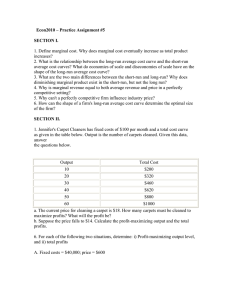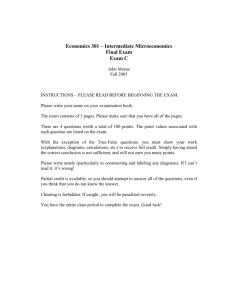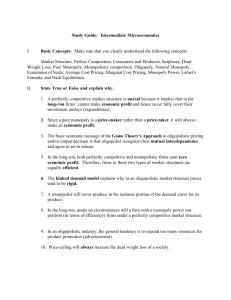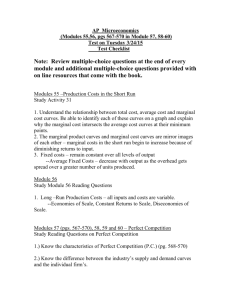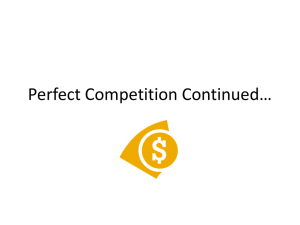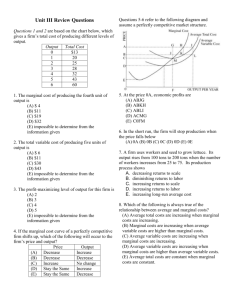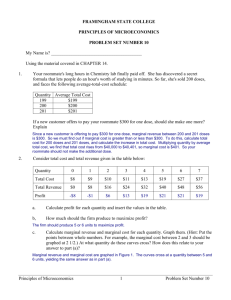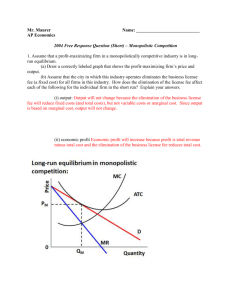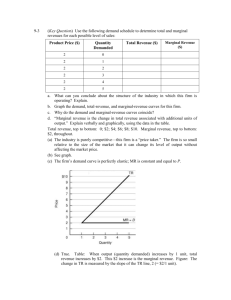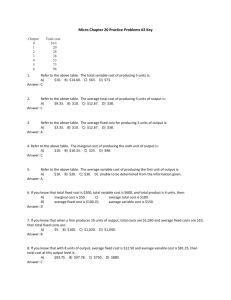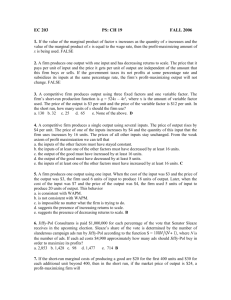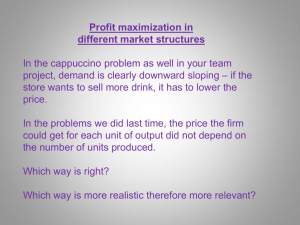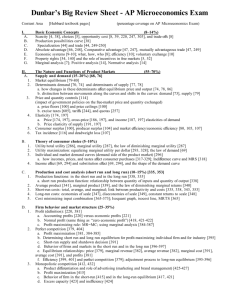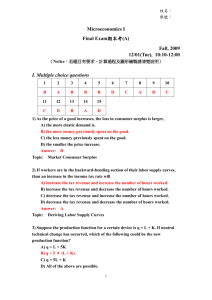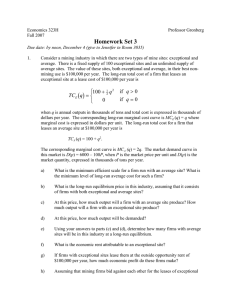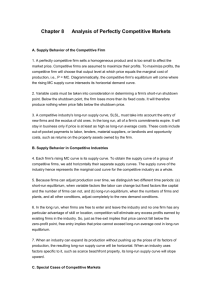Chapter 9: Pure Competition in the Long Run Purely competitive
advertisement
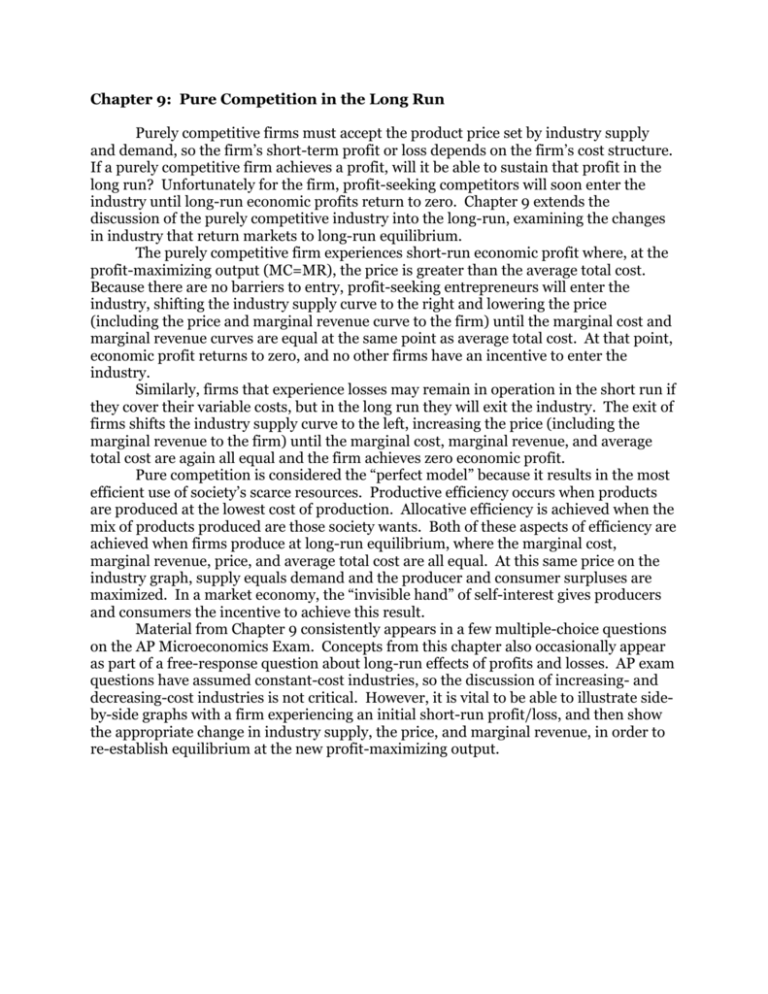
Chapter 9: Pure Competition in the Long Run Purely competitive firms must accept the product price set by industry supply and demand, so the firm’s short-term profit or loss depends on the firm’s cost structure. If a purely competitive firm achieves a profit, will it be able to sustain that profit in the long run? Unfortunately for the firm, profit-seeking competitors will soon enter the industry until long-run economic profits return to zero. Chapter 9 extends the discussion of the purely competitive industry into the long-run, examining the changes in industry that return markets to long-run equilibrium. The purely competitive firm experiences short-run economic profit where, at the profit-maximizing output (MC=MR), the price is greater than the average total cost. Because there are no barriers to entry, profit-seeking entrepreneurs will enter the industry, shifting the industry supply curve to the right and lowering the price (including the price and marginal revenue curve to the firm) until the marginal cost and marginal revenue curves are equal at the same point as average total cost. At that point, economic profit returns to zero, and no other firms have an incentive to enter the industry. Similarly, firms that experience losses may remain in operation in the short run if they cover their variable costs, but in the long run they will exit the industry. The exit of firms shifts the industry supply curve to the left, increasing the price (including the marginal revenue to the firm) until the marginal cost, marginal revenue, and average total cost are again all equal and the firm achieves zero economic profit. Pure competition is considered the “perfect model” because it results in the most efficient use of society’s scarce resources. Productive efficiency occurs when products are produced at the lowest cost of production. Allocative efficiency is achieved when the mix of products produced are those society wants. Both of these aspects of efficiency are achieved when firms produce at long-run equilibrium, where the marginal cost, marginal revenue, price, and average total cost are all equal. At this same price on the industry graph, supply equals demand and the producer and consumer surpluses are maximized. In a market economy, the “invisible hand” of self-interest gives producers and consumers the incentive to achieve this result. Material from Chapter 9 consistently appears in a few multiple-choice questions on the AP Microeconomics Exam. Concepts from this chapter also occasionally appear as part of a free-response question about long-run effects of profits and losses. AP exam questions have assumed constant-cost industries, so the discussion of increasing- and decreasing-cost industries is not critical. However, it is vital to be able to illustrate sideby-side graphs with a firm experiencing an initial short-run profit/loss, and then show the appropriate change in industry supply, the price, and marginal revenue, in order to re-establish equilibrium at the new profit-maximizing output.

